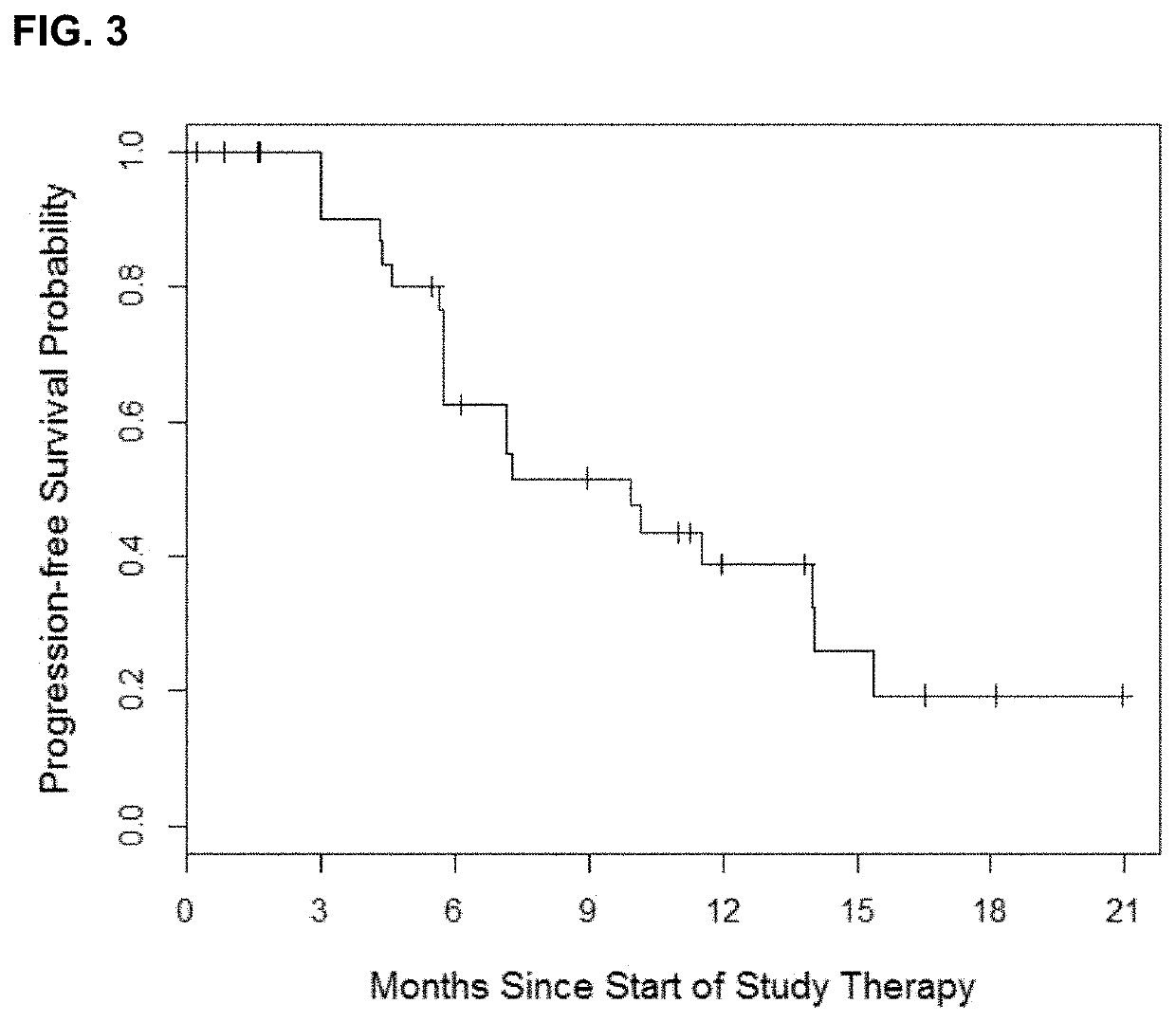Pulse dosing regimen and methods of treatment
a technology of erlotinib and dosing regimen, applied in the direction of microcapsules, capsule delivery, nanocapsules, etc., to achieve the effect of increasing the concentration of cs
- Summary
- Abstract
- Description
- Claims
- Application Information
AI Technical Summary
Benefits of technology
Problems solved by technology
Method used
Image
Examples
specific example 1
rlotinib Results in Impressive Control of Central Nervous System Disease
[0062]Based on evolutionary mathematical modeling data, the present inventors tested a novel schedule of twice weekly pulse erlotinib in combination with daily erlotinib as initial EGFR TKI treatment in patients with EGFR-mutant lung cancers.
[0063]The trial was a prospective, open-label, single center phase 1 dose-escalation study of twice weekly pulse dose and daily erlotinib in patients with EGFR-mutant lung cancers. The primary endpoint of the study was the identification of the maximum tolerated dose of the combination of twice weekly high dose and daily low dose erlotinib. Secondary endpoints included the measurement of progression-free survival, overall survival, complete and partial response rate, determination of central nervous system progression and pharmacokinetic analysis. The study was registered at clinicaltrials.gov (NCT01967095). The trial was conducted after approval from the institutional revie...
specific example 2
[0097]Adjuvant therapy or care, also called adjunct therapy or adjunctive therapy or care, is therapy that is given in addition to the primary, main, or initial therapy to maximize its effectiveness. As an adjuvant agent modifies the effect of another agent, so adjuvant therapy modifies other therapy.
[0098]For example, resectable non-small-cell lung cancer (NSCLC) accounts for 20% to 25% of lung cancer cases diagnosed annually; however, only 60% of patients survive 5 years after surgery. The first trial to demonstrate a significant survival benefit with adjuvant cisplatin-based chemotherapy was reported a decade ago. Subsequently, additional randomized trials confirmed the role of adjuvant chemotherapy in patients with pathologic stage II and III NSCLC, and subset analyses suggested a benefit in patients with large IB tumors. A meta-analysis provided further support for adjuvant chemotherapy. Kelly et al., Adjuvant Erlotinib Versus Placebo in Patients With Stage IB-IIIA Non-Small-Ce...
PUM
| Property | Measurement | Unit |
|---|---|---|
| pKa | aaaaa | aaaaa |
| solubility | aaaaa | aaaaa |
| concentration | aaaaa | aaaaa |
Abstract
Description
Claims
Application Information
 Login to View More
Login to View More - R&D
- Intellectual Property
- Life Sciences
- Materials
- Tech Scout
- Unparalleled Data Quality
- Higher Quality Content
- 60% Fewer Hallucinations
Browse by: Latest US Patents, China's latest patents, Technical Efficacy Thesaurus, Application Domain, Technology Topic, Popular Technical Reports.
© 2025 PatSnap. All rights reserved.Legal|Privacy policy|Modern Slavery Act Transparency Statement|Sitemap|About US| Contact US: help@patsnap.com



